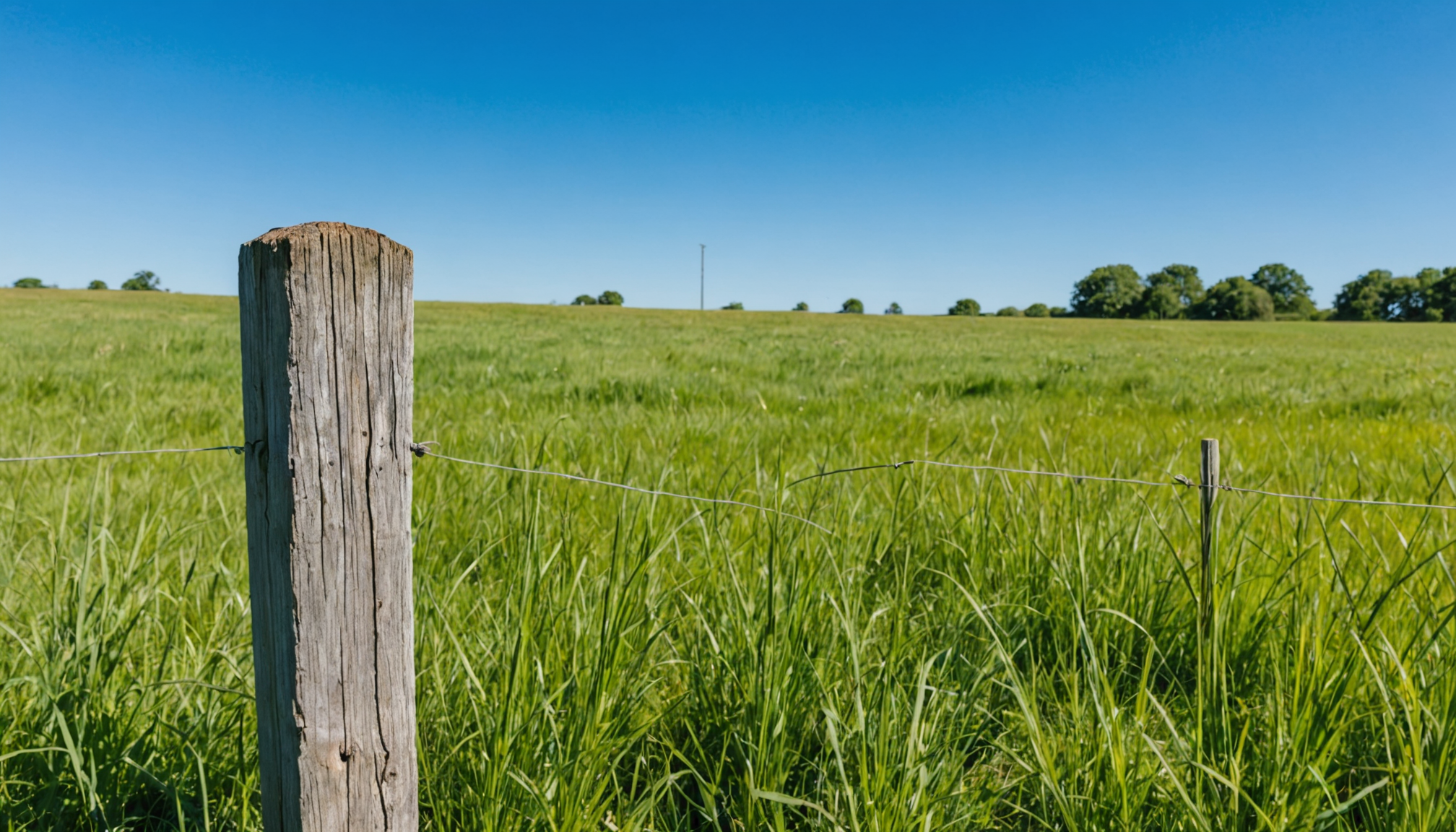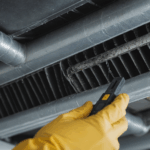Before embarking on your fence upgrade journey, it’s crucial to start by thoroughly assessing the current condition of your fence. This step not only informs your upgrade strategy but also ensures that your investment of time and money will yield the results you desire. As every homeowner knows, making informed decisions is key to successful home improvement projects.
Begin the assessment by walking the perimeter of your property. Take note of areas that are particularly worn or damaged. Pay close attention to the fence posts, as they are the backbone of your structure. Posts that are leaning or appear to be rotting may need to be replaced to maintain the structural integrity of your upgrade. Don’t forget to check the connections between panels, ensuring there are no loose screws or nails. These small details can significantly impact the overall stability and longevity of the fence.
Material evaluation is also a critical aspect of this assessment. Different materials exhibit different signs of wear and have varying lifespans. To help you assess your fence type, use the table below to distinguish potential issues specific to the material of your fence:
| Material | Common Issues to Look For |
| Wood | Warping, rot, insect damage |
| Vinyl | Cracks, discoloration, mildew |
| Metal | Rust, paint peeling, bent sections |
As you conduct this assessment, consider the functionality of your current fence. Does it adequately meet your property’s needs in terms of security and privacy? Are there aesthetic improvements that could enhance the curb appeal of your home? Making a list of functional and aesthetic goals will inform your material choices and upgrade pathway.
While aesthetics and functionality are important, don’t overlook the impact of your fence on the well-being of your family. If you have children, pets, or frequent visitors, safety should be paramount. Look for splinters, exposed nails, or sharp edges that could pose risks. Addressing these concerns will ensure that your fence is both a robust boundary and a safe environment for your family.
Gathering homeowner tips from neighbors or online forums can provide insights into local challenges. Elements like weather conditions and neighborhood regulations can greatly influence the maintenance and upgrading process. A thorough understanding of these factors will help tailor your upgrade to best suit your specific context, ensuring that your new fence will be both durable and an attractive enhancement to your property.
selecting the right materials
When choosing materials for your fence upgrade, it’s essential to consider both aesthetic appeal and functional benefits. The right materials not only enhance the look and security of your property but also ensure longevity, reducing future maintenance costs. Here’s a systematic approach to selecting the ideal materials for your fence project:
1. Determine Your Needs and Preferences:
– Start by listing what you want from your fence: privacy, security, noise reduction, or aesthetic enhancement. Your priorities will guide your material selection.
– Consider the style of your home and how the fence will complement it. A modern home may suit sleek metal fences, while a rustic property could benefit from traditional wood.
2. Evaluate Material Options:
– Write down the pros and cons of each material type to find what aligns best with your goals.
– Wood: Offers classic appeal and privacy but requires regular maintenance against rot and insects. Choose types like cedar or redwood for their natural resistance to decay.
– Vinyl: Provides durability and low maintenance, resistant to moisture and UV damage, but may not offer the same aesthetic warmth as wood.
– Metal (Aluminum or Steel): Known for strength and security. Aluminum resists rust and is low-maintenance, while wrought iron offers elegance with higher upkeep.
– Composite: Combines wood fibers and plastic, offering the look of wood with increased durability and minimal maintenance.
3. Research Local Considerations:
– Check the local climate as it can affect material performance. For example, metal can withstand extreme temperatures better than some woods.
– Investigate homeowner association guidelines or local regulations, which might dictate material use or fence height limitations.
4. Sustainability and Environmental Impact:
– If environmental concerns are important to you, research sustainable options. Reclaimed wood or recycled composites are eco-friendly choices.
– Consider the lifecycle and impact of materials. For long-term sustainability, choose materials with a lower environmental footprint.
5. Budget and Longevity:
– Compare initial costs against long-term maintenance expenses. Investing more upfront in higher-quality materials can save money over time.
– Seek quotes from several suppliers and ask for homeowner tips to ensure you get the best deal without compromising on quality.
6. Consult Experts:
– Visit local home improvement stores or consult with professionals for insights on new materials or trends that may suit your fence upgrade.
– Online forums and community groups can offer advice based on firsthand experiences, providing you with valuable homeowner tips.
Carefully selecting the right materials tailored to your specific needs and environment will ensure your home’s fence upgrades not only meet the functional requirements but also add value and charm to your property.
essential tools for the job
Equipping yourself with the right tools is fundamental to any successful fence upgrade. Having the proper equipment not only streamlines the process but also ensures that each step, from demolition to finishing, is performed efficiently and safely. To avoid unnecessary trips to the store and to facilitate a smooth project, it is vital to prepare ahead of time by assembling all necessary tools before commencing work.
Start with the basics: a reliable measuring tape and a level. These tools are crucial for ensuring your fence aligns correctly and maintains an even appearance across your property. Incorrect measurements can lead to uneven panels or unstable posts, so double-checking with a level can resolve potential issues early in the process.
A cordless drill is indispensable for this project. Strong and versatile, a good drill with varying torque settings allows you to quickly secure screws and other fasteners. This tool is especially useful when working with dense materials, such as hardwood or composite. Additionally, the convenience of a cordless model means no restrictions on mobility as you work along your fence line.
A post hole digger, either manual or powered, will also be necessary, particularly if you need to replace or relocate fence posts during the upgrade. This tool ensures that holes are of the correct depth and diameter for maximum stability. Coupled with a reliable shovel, the post hole digger enables effective removal and relocation of earth, facilitating post placement and alignment.
Sawing might be required at various stages of the upgrade. Equip yourself with a circular saw for precision cutting, especially if you’re working with new materials, customizing lengths, or fitting around particular landscape features. For more intricate cutting, particularly around corners or detailed designs, a jigsaw can offer the finesse required for those precise adjustments.
Don’t overlook essential hand tools like a sturdy hammer, a set of pliers, and a utility knife. These often undervalued tools can address a variety of minor tasks, such as removing old nails, cutting through binding or packaging, and adjusting wire mesh or ties.
Safety is paramount, so arm yourself with protective gear. Sturdy gloves will protect your hands from splinters and sharp edges, while safety goggles ensure your eyes remain shielded from debris. Long sleeves and durable work pants can provide additional protection, especially when handling heavy or rough materials.
Beyond the immediate tasks, having a reliable pair of bolt cutters and a wire cutter is advisable if you’re upgrading or replacing sections of chain-link fencing or incorporating metal into your design. These tools allow you to modify materials to fit specific dimensions or to remove old, corroded fasteners without undue effort.
Lastly, if your project includes painting or staining new elements, a quality set of brushes or a paint sprayer will enable a smooth, even application, enhancing the appearance and longevity of the materials.
By assembling the right combination of tools, you’ll be well-equipped to tackle the complexities of a fence upgrade with confidence. This preparation not only saves time but ensures that each element of the upgrade is executed with precision and attention to detail, ultimately contributing to a stronger, more aesthetically pleasing addition to your home.
step-by-step upgrade process
With the necessary tools at your disposal, you’re ready to begin the transformation of your fence. Start by planning your steps carefully to ensure an efficient and effective upgrade. Begin with any needed demolition work, focusing on safely removing damaged or unwanted sections without compromising the stability of areas you plan to keep. A systematic approach helps maintain the balance of the entire structure during this stage.
Once the old parts are cleared, prepare the groundwork for new posts if required. Use your post hole digger to achieve the correct depth and alignment. Stability is key, so make sure posts are set securely in concrete, allowing adequate time for the concrete to cure before proceeding. This step might test your patience, but the long-term stability it provides is critical for a durable and safe fence.
As you start to install new panels or boards, attention to alignment ensures a professional finish. Constantly refer back to your measuring tape and level, adjusting as needed to maintain consistency. If you’re using pre-fabricated panels, follow the manufacturer’s instructions closely for the best results. This part of the project is where precision and patience pay off, creating the uniformity that enhances curb appeal.
For fences requiring new rails, pre-drill holes to make the installation easier and to prevent splitting, especially when working with wood. Secure rails to the posts with appropriate hardware, ensuring they are tight and stable. This step forms the framework for panels or pickets, so accuracy is vital for function and appearance.
When it comes to attaching pickets or boards, start from one end and work your way along the fence line. Keep spacing consistent with a simple spacer tool, which helps create uniform gaps that are both visually appealing and functionally efficient. Remember, this is your opportunity to infuse some personal style—consider varying heights or decorative patterns to elevate the overall design.
With the basic structure in place, address any technical elements such as gates, ensuring they open smoothly and latch securely. Pay extra attention to hardware installation to withstand daily use, prolonging the lifespan of gates and hinges. This careful attention to detail contributes significantly to the overall usability of the fence.
Before you finish, conduct a thorough inspection of all connections, joints, and fastenings. Tighten any loose bolts and ensure no nails or screws are exposed, as these could pose safety risks and shorten the lifespan of the structure. This comprehensive check solidifies your work so far, reinforcing both safety and aesthetics.
Throughout this process, keep in mind any homeowner tips you’ve gathered concerning the regional climate or specific maintenance concerns. Local insights can be invaluable in adapting your fence to withstand environmental factors unique to your location. Thoughtful consideration of these details can mean the difference between a fence that merely completes the job and one that significantly enhances your property.
By following these steps methodically, you’re not just upgrading your fence, you’re investing in a home improvement that enhances both the utility and beauty of your outdoor space, ultimately benefitting your family’s enjoyment of your property for years to come.
adding final touches
Adding the final touches to your fence upgrade is like adding the cherry on top of a sundae—it’s crucial for a polished and professional finish. Begin by examining the color and texture of your new fence, considering if painting or staining is necessary to enhance durability and aesthetic appeal. Choose a high-quality exterior paint or wood stain that complements your home’s style, providing weather protection while adding a cohesive look to your property.
For a seamless application, consider using a paint sprayer for larger surfaces and brushes for touch-ups or intricate details. Ensure the fence is clean and dry before application to allow for an even coat. If your upgraded fence includes metal components, apply a rust-resistant primer before adding color to prevent corrosion and extend the life of your fence.
Landscaping around your newly upgraded fence can significantly elevate its appearance. Adding perennial plants or hedges along the fence line introduces vibrant colors and textures, creating an inviting boundary that enhances curb appeal. Consider the growth habits and maintenance needs of your plants to ensure they complement the fence without causing future structural concerns.
Consider incorporating decorative elements such as finials, post caps, or hangers for lighting fixtures. These subtle enhancements add character and can highlight specific areas of your fence, personalizing your outdoor space. Post caps, for example, not only add elegance but also protect the post from weathering, adding value and extending the life of your fence.
Lighting fixtures can also play a key role in the final touches, offering both aesthetic charm and increased safety. Solar lights along the fence line provide a soft glow, illuminating pathways without significant energy costs. Choose fixtures that match your home’s exterior features, creating a harmonious outdoor environment perfect for evening gatherings.
Finally, re-evaluate the functionality of gates and latches, ensuring smooth operation and security. Adding padding to gate stoppers or applying oil to hinges can reduce noise and wear over time. Regular maintenance checks as part of your ongoing routine will keep your fence in peak condition, providing lasting value and peace of mind.
In conclusion, upgrading your fence is more than just a home improvement project; it’s an opportunity to enhance the aesthetic and functional aspects of your property. By carefully assessing your current fence, selecting the right materials, using essential tools, meticulously following the upgrade process, and adding thoughtful final touches, you transform your fence into a lasting feature that enhances your family’s enjoyment and increases your home’s value. By integrating homeowner tips and local considerations, your fence can be both a statement of personal style and a bastion of resilience against environmental challenges.


